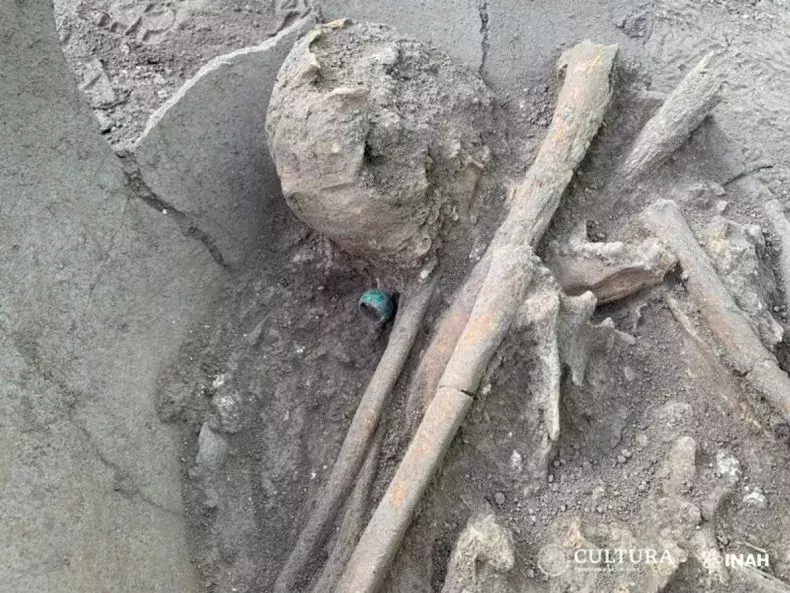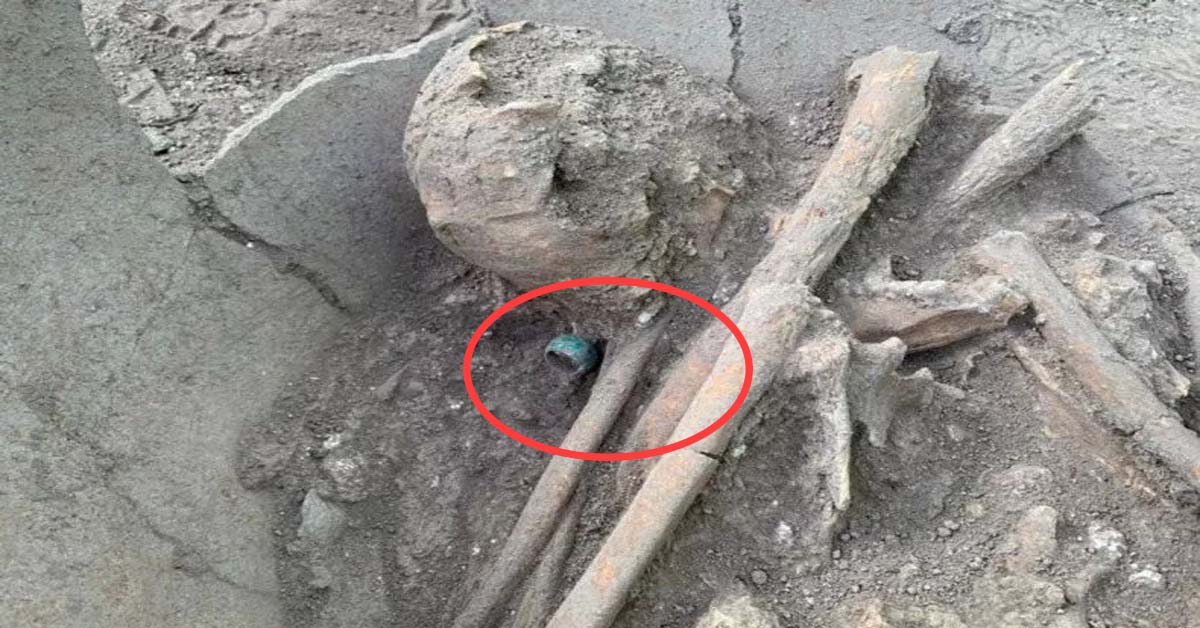1,200-Year-Old Human Skeleton Found with Stunning Jade Ring: Unveiling Secrets of El Tigre Archaeological Zone

Archaeologists have discovered the ancient skeleton of a young woman wearing a well-preserved jade ring at a site in Mexico.
The skeleton, which is estimated to be about 1,200 years old, was found at the El Tigre archaeological site, in Campeche, during excavations at the Mayan Train line, which runs along the Yucatán Peninsula, the National Institute of Anthropology and History (INAH) said in a statement.
The skeleton was found in a flexed position inside a vessel with a ceramic bowl. Another vessel was found alongside the skeleton. These findings indicate she was buried as part of a funeral ritual.
The jade ring this individual was buried with was “showy” and “well preserved,” INAH said.
Based on the features of the vessels, archaeologists believe the findings date back to the Late Classic period of 600 to 800 AD, during the ancient Mayan era. This civilisation is known for its ancient temples, some of which can still be seen today.

The ancient Mayans lived throughout much of Central America, from the Chiapas and Yucatán areas, now part of southern Mexico. There is also evidence that they lived throughout Guatemala, Honduras, Belize and El Salvador and into Nicaragua.
The Late Classic period was a time of rapid growth for some of the great Mayan cities. Tikal, one of the ancient Mayan capitals, had become very powerful during this time, but it had a period of decline a few hundred years later. Tikal is known as having been one of the most powerful kingdoms in Mayan times.
Diego Prieto Hernández, the general director of INAH, said that analysis into the find will continue in the lab, in order to gather more anthropophysical data. They will also analysis other items found at the sight, including seeds and ornaments.
The find marks the 177th pre-Hispanic human burial along the Mayan Train rail, which runs across Chiapas, Tabasco and Campeche. Archaeologists are excavating the area to allow for the preservation of such ancient findings.
As of August 14, 281,353 ceramic fragments “associated with the presence of ancient human groups” had been found in this particular section of the railway, Hernández said.

This new finding will give archaeologists more insight into ancient funeral practices.
Archaeologists already know that in ancient Mayan civilization, the bodies of the dead were usually wrapped up in cotton before they were buried. Often, individuals were buried in certain directions to provide access to the underworld.




